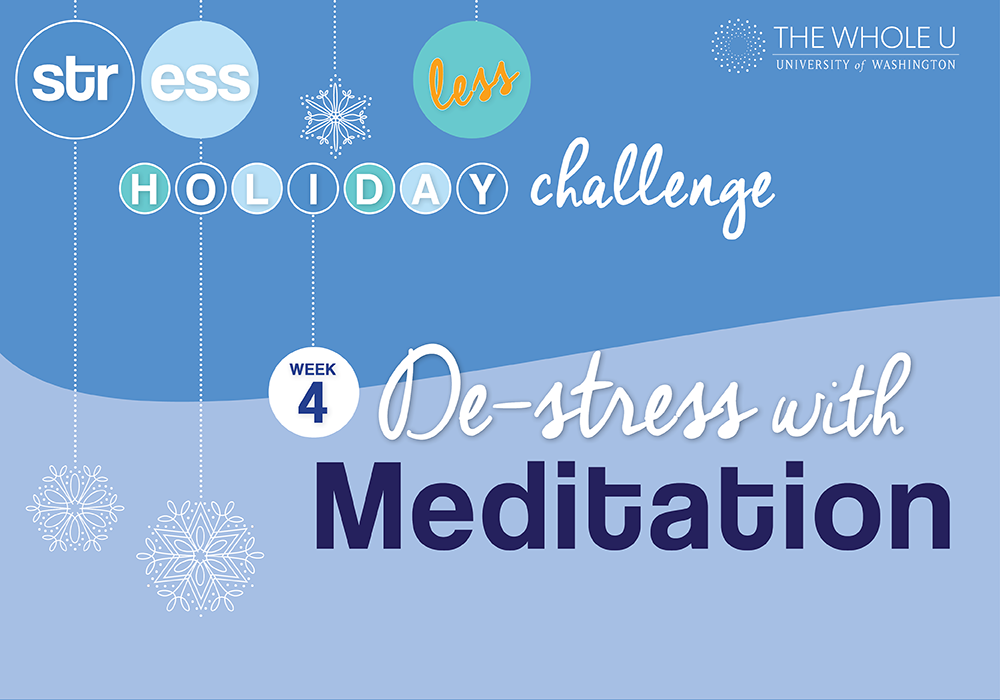
Meditation During the Holidays
The holidays are often a time of love and celebration with those dearest to our hearts, but these moments can also bring up plenty of stress and emotional turmoil. At least speaking for myself, the holidays are a confusing time in this regard. I often feel conflicted about not wanting to see certain people, but also wanting to be together with family. Combine this with the demands of party-going, gift buying, baking, cleaning, healthy eating, and entertaining, and you’ve got a recipe for heightened levels of stress.
As you may have heard in the media lately, meditation is a great tool for managing one’s stress levels. I could walk you through the science behind that, but since I’m not a scientist my time might be better spent providing a more intuitive explanation. Yoga and meditation, at the heart, are really just about connection. Yoga, simply translated in Sanskrit, means “union.” These are practices designed to help unite us in mind, body, and soul. But they are also practices that help us feel connected to what’s going on around us. They are practices that force us to be present with what’s going on in this very moment. And they are practices that require we pay attention, and lean into the chaos or uncomfortable nature of the holidays rather than avoiding it or pushing it away.
Over the past five years, this is the single most valuable thing I have learned about managing stress. So often we treat “stress” or uncomfortable emotions as these “bad” things that we want to get rid of. But I’ve learned that leaning into these feelings — unpleasant as they may be — softens me up considerably. Rather than fighting against something, I choose to allow myself to be open to it. This is our job in mindfulness practices: to be present with what’s in front of us without judgment.
If you find yourself feeling stressed about the holidays for one reason or another, I invite you to try practicing a metta meditation during the holidays.
Step 1: Find a comfortable seat, or lie down if you feel you can best concentrate that way; I often lie down with my legs up a wall, which is an excellent posture for relaxing the nervous system.
Step 2: As you close your eyes and begin to notice your breath, start to visualize yourself in your mind’s eye. See yourself, and repeat the following:
May I be happy
May I be healthy
May I be peaceful
May I be loved
Repeat this, slowly, 3-5 times while breathing evenly.
Step 3: Start to visualize someone that you love dearly. This could be a significant other, family member, or friend. See that person in your mind’s eye, and repeat the following:
May you be happy
May you be healthy
May you be peaceful
May you be loved
Repeat this, slowly, 3-5 times while breathing evenly.
Step 4: Shift your focus to someone who has presented challenges for you. This could be someone you are working on forgiving or someone you’ve disagreed with. If nobody comes to mind, allow for anyone else to surface in your mind’s eye. Repeat the following:
May you be happy
May you be healthy
May you be peaceful
May you be loved
Repeat this, slowly, 3-5 times while breathing evenly.
Step 5: Finally, think of a complete stranger. This could be someone who made your coffee this morning, your bus driver, someone you passed on your walk to work this morning. Hold that person in your mind’s eye and repeat the following:
May you be happy
May you be healthy
May you be peaceful
May you be loved
Repeat this, slowly, 3-5 times while breathing evenly.
Step 6: Finish the meditation just by focusing deeply on your 5-10 full breaths, or for however long you feel you need.
The Whole U has a few opportunities for you to try meditation:
- Mindfulness Northwest is offering a full-day retreat on Saturday, December 12 at the Center for Urban Horticulture. Register here.
- Whole U partner Art of Living is offering a meditation class on campus. If you are interested in joining a meditation event on Tuesday, December 15 at the HUB Lyceum from noon – 1:00 p.m. Register here.